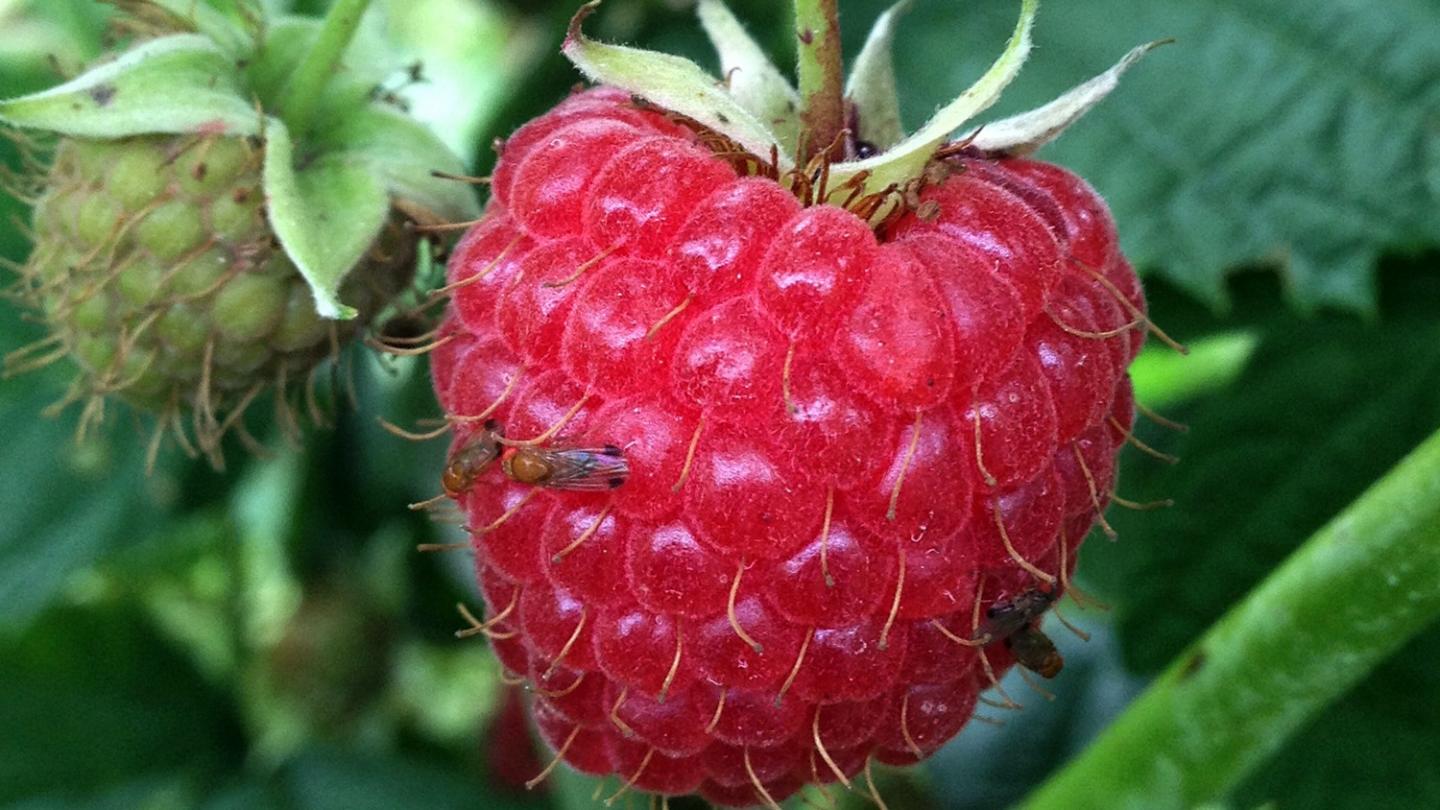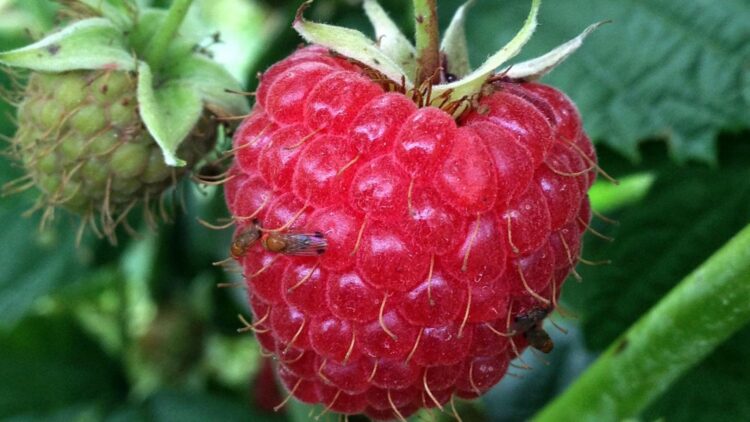
Credit: Hannah Burrack, NC State University
A recent study finds that the invasive spotted wing drosophila (Drosophila suzukii) prefers to lay its eggs in places that no other spotted wing flies have visited. The finding raises questions about how the flies can tell whether a piece of fruit is virgin territory – and what that might mean for pest control.
D. suzukii is a fruit fly that is native to east Asia, but has spread rapidly across North America, South America, Africa and Europe over the past 10-15 years. The pest species prefers to lay its eggs in ripe fruit, which poses problems for fruit growers, since consumers don’t want to buy infested fruit.
To avoid consumer rejection, there are extensive measures in place to avoid infestation, and to prevent infested fruit from reaching the marketplace.
“Ultimately, we’re talking about hundreds of millions of dollars in potential crop losses and increases in pest-management costs each year in the United States,” says Hannah Burrack, co-author of a paper on the study and a professor of entomology at North Carolina State University. “These costs have driven some small growers out of business.
“The first step toward addressing an invasive pest species is understanding it. And two fundamental questions that we had are: Which plants will this species attack? And why does it pick those plants?”
One of the things that researchers noticed when observing infestations on farms was that the species’ egg-laying behavior was different, depending on the size of the infestation.
When D. suzukii populations were small, there would only be a few eggs laid in each piece of fruit, and they would only be in ripe fruit. If there were more D. suzukii present, more eggs would be laid in each piece of fruit. The researchers had also noticed that large populations of D. suzukii were also more likely to lay eggs in fruit that wasn’t ripe.
To better understand the egg-laying behavior of D. suzukii, the researchers conducted a series of experiments. And the results surprised them.
Specifically, the researchers found that, given a choice, female D. suzukii preferred to lay their eggs in fruit that other flies had never visited.
“It doesn’t matter if the other flies lay eggs,” Burrack says. “It doesn’t even matter if the other flies are male or female. It only matters if other flies have touched a piece of fruit. If untouched fruit is available, D. suzukii will reject fruit that other flies have visited.
“We’re not sure if the flies leave behind a chemical or bacterial marker, or something else entirely – but the flies can tell where other flies have been.”
The researchers say that the next step is to determine what, exactly, the D. suzukii are detecting.
“If we can get a better understanding of what drives the behavior of this species, that could inform the development of new pest-control techniques,” Burrack says. “We’re not making any promises, but this is a significant crop pest – and the more we know, the better.”
###
The paper, “Social signals mediate oviposition site selection in Drosophila suzukii,” is published in the journal Scientific Reports. Corresponding author of the paper is Johanna Elsensohn, who did the work while completing her Ph.D. at NC State. The paper was co-authored by Marwa F. K. Aly, a faculty member of Minia University, and Coby Schal, the Blanton J. Whitmire Distinguished Professor of Entomology at NC State.
The work was done with support from: the U.S. Department of Agriculture National Institute of Food and Agriculture’s Organic Agriculture Research and Extension Initiative, under grants 2018-02859 and 2015-07403; USDA’s Animal and Plant Health Inspection Service, under cooperative agreement 17-8130-0194-CA; National Science Foundation Integrated Graduate Education and Research Training grant number 1068676; and an Egyptian government scholarship to Aly.
Media Contact
Matt Shipman
[email protected]
Related Journal Article
http://dx.





